Growing fruits, vegetables, or flowers is a very rewarding experience. In fact, gardening offers a way to keep in touch with the earth by putting in the work to plan and prepare for the future harvest. Taking care of plants, watching them grow, and then reaping their bounty provides not only a sense of accomplishment but is healthy and cost-effective. In addition, it increases your horticultural knowledge. Gardening at the right time of the seasons is important for the successful growth of plants. In gardening terms, there are only summer, winter, spring, and autumn seasons spring is the time to plant, and autumn is the time to grow.
Gardening isn’t that complicated, but having a plan when starting a garden is important. This includes deciding on the location of where the garden will be as well as the types of plants that will grow best. Most plants need a lot of sun to grow, especially vegetables, so choosing the right spot will make the difference between a bumper crop and a meager one. There are many types of gardens to choose from depending on where you live, available space, and the amount of sunshine you have. In this article we will review the best way to start a garden in 27 steps any beginner can do.
Types of Gardens
These are some of the types of gardens there are which include:
- Vegetable gardens require quite a bit of space, some common plants grown in beginner gardens include carrots, beets, bell peppers, zucchini, blackberries, raspberries, cabbage, cucumbers, garlic, strawberries, squash, tomatoes, radishes, green beans, and lettuce.
- Flower gardens can be smaller than vegetable gardens and can also be incorporated into them. In fact, some have specific purposes such as a butterfly garden that will attract butterflies which are also pollinators. In addition, flower gardens scent the air around a home and garden and provide cut flowers to bring into the house. Some common beginner flowers include peony, four o’clock, moss rose, marigold (beneficial plant kills nematodes), petunia, pansy, and impatiens.
- Herb gardens can be part of a vegetable or flower garden and used as companion plants they assist in pest removal. Furthermore, fresh herbs are wonderful for the home chef and include such plants as cilantro, parsley, dill, and basil.
Choose a Location
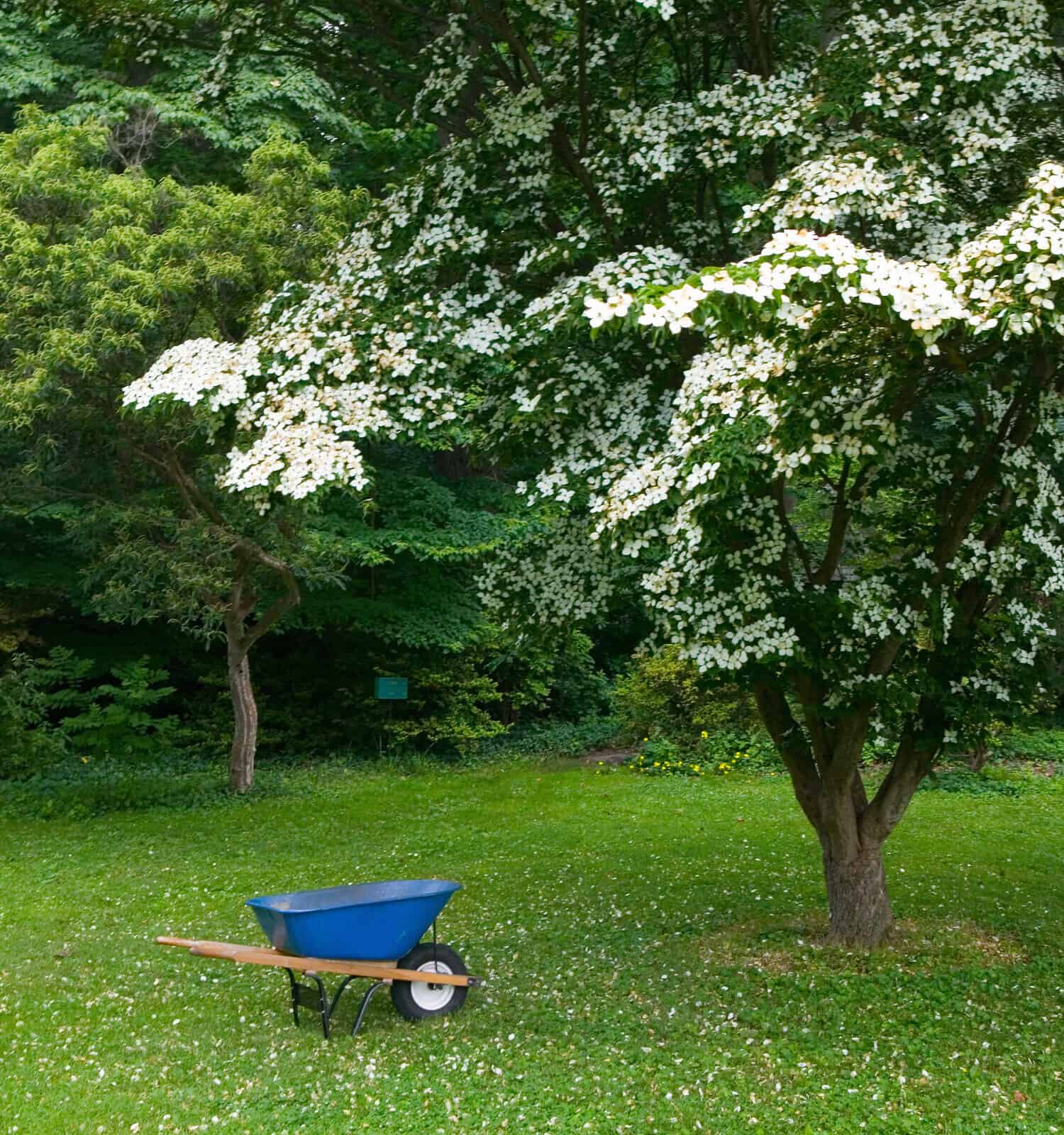
Picking the perfect spot for a garden is important for its success.
©Joseph Sohm/Shutterstock.com
The first step in starting a garden is to select a location. In fact, gardens need at least 6 hours of full sun, but for areas that are extremely hot morning sun is better than hotter afternoon sun. Observe the sun during the day to see how much sunlight is in the area selected.
Define What to Grow

Choose what you like to eat when starting a garden.
©Sitara_Y/Shutterstock.com
Select the type of garden you want to grow; this will inform you of the rest of your steps. Do you want to grow vegetables, flowers, herbs, or all three?
Locate the Water Source
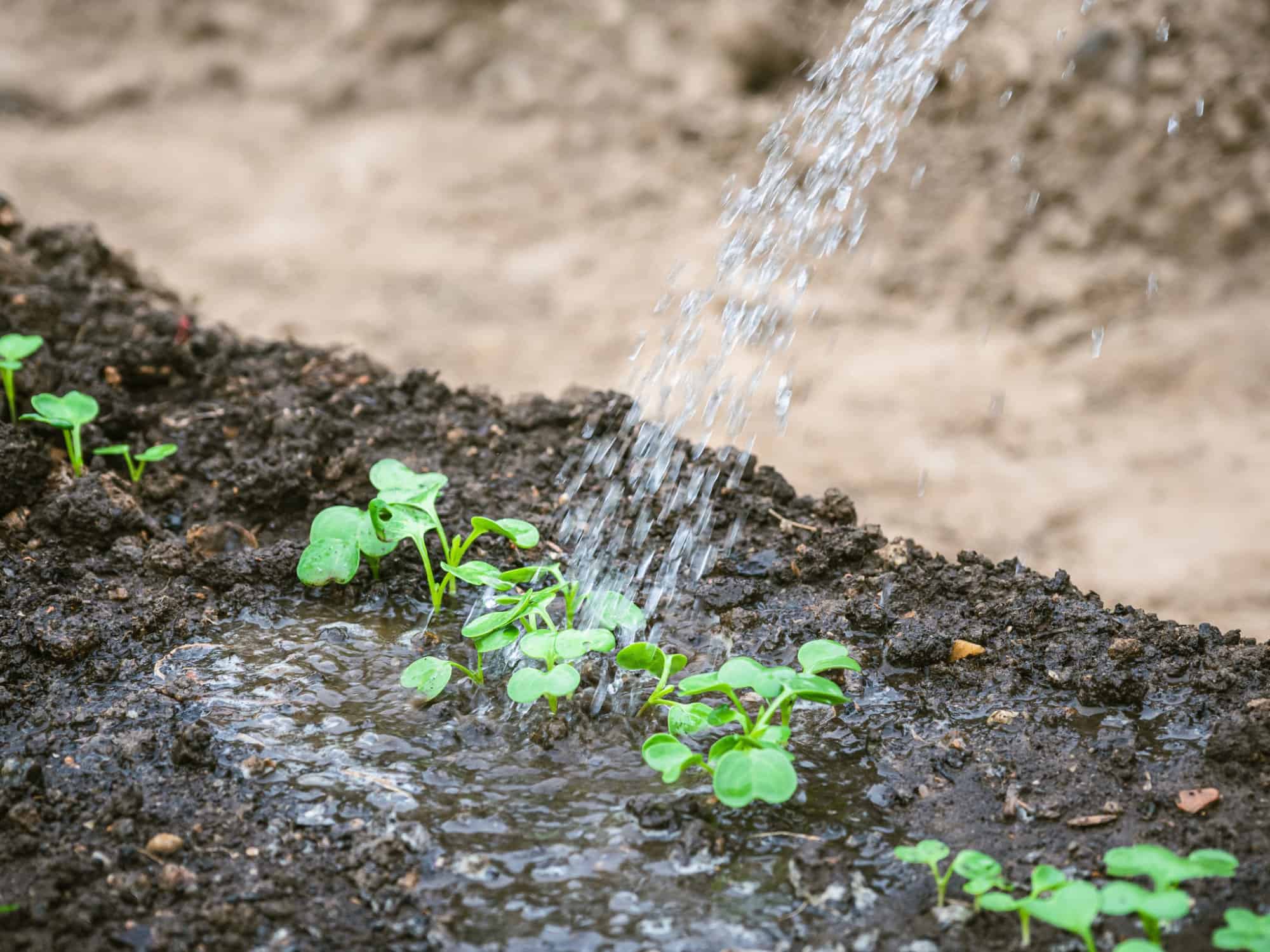
When planning a garden locate the water source first.
©Nadia Nice/Shutterstock.com
Make note of where your water source is and start the garden close by. A drip irrigation system waters plants on a timer. In contrast, hand-watering is more time-consuming. Determine dry, moist, and hot areas in the location you have selected.
Plan the Garden Size

Plan a manageable space for the garden.
©Philippe Clement/Shutterstock.com
It’s best to start out small, an area of about 10 square feet is a manageable size to start out with.
Select Gardening Method
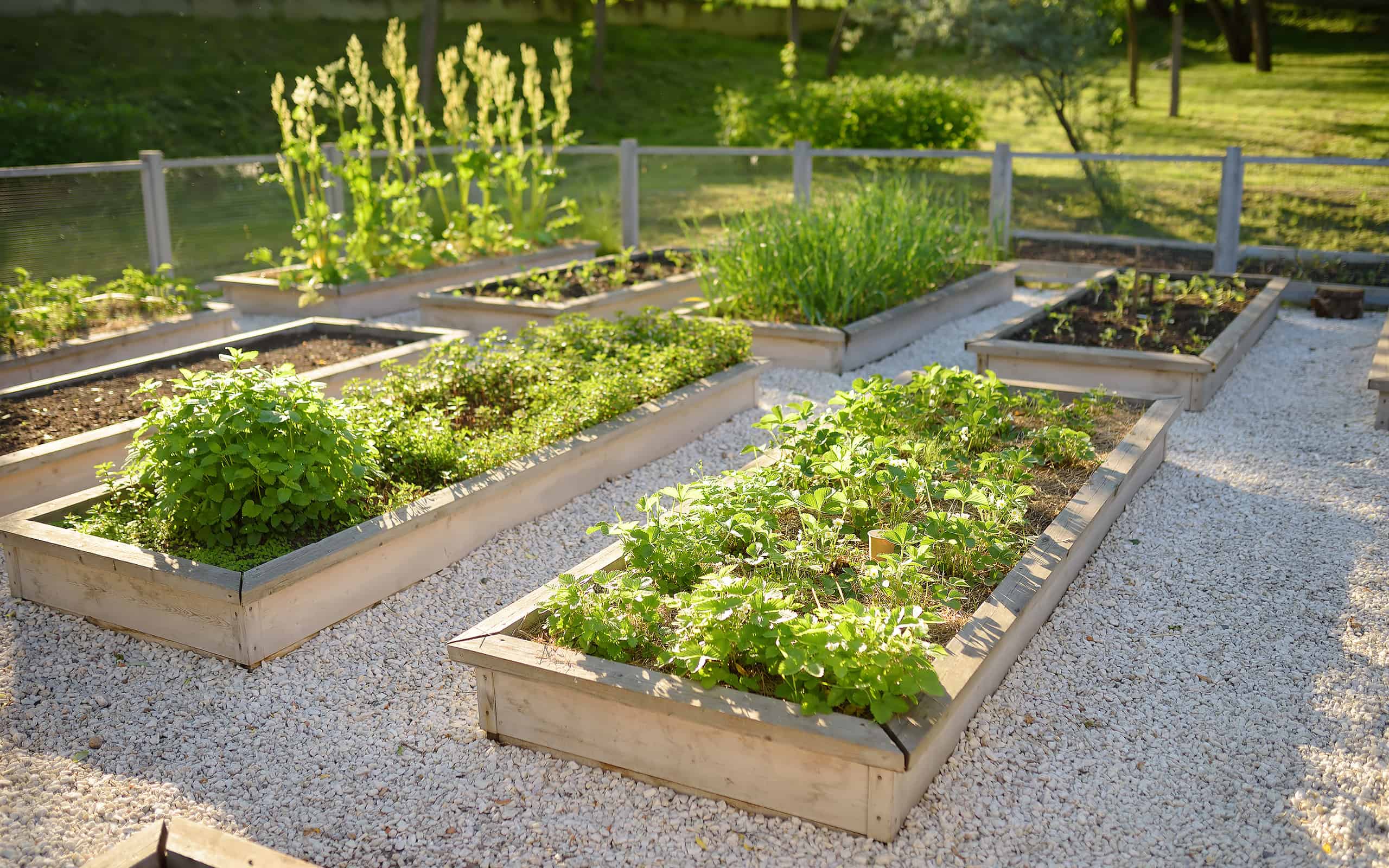
Choose the right planting method for your space.
©SbytovaMN/iStock via Getty Images
French intensive gardening can yield a great deal of vegetables and/or flowers in a small compact area but requires more water. However, traditional in-ground gardens may attract more pests and weeds but use less water.
Raised or In-Ground Beds
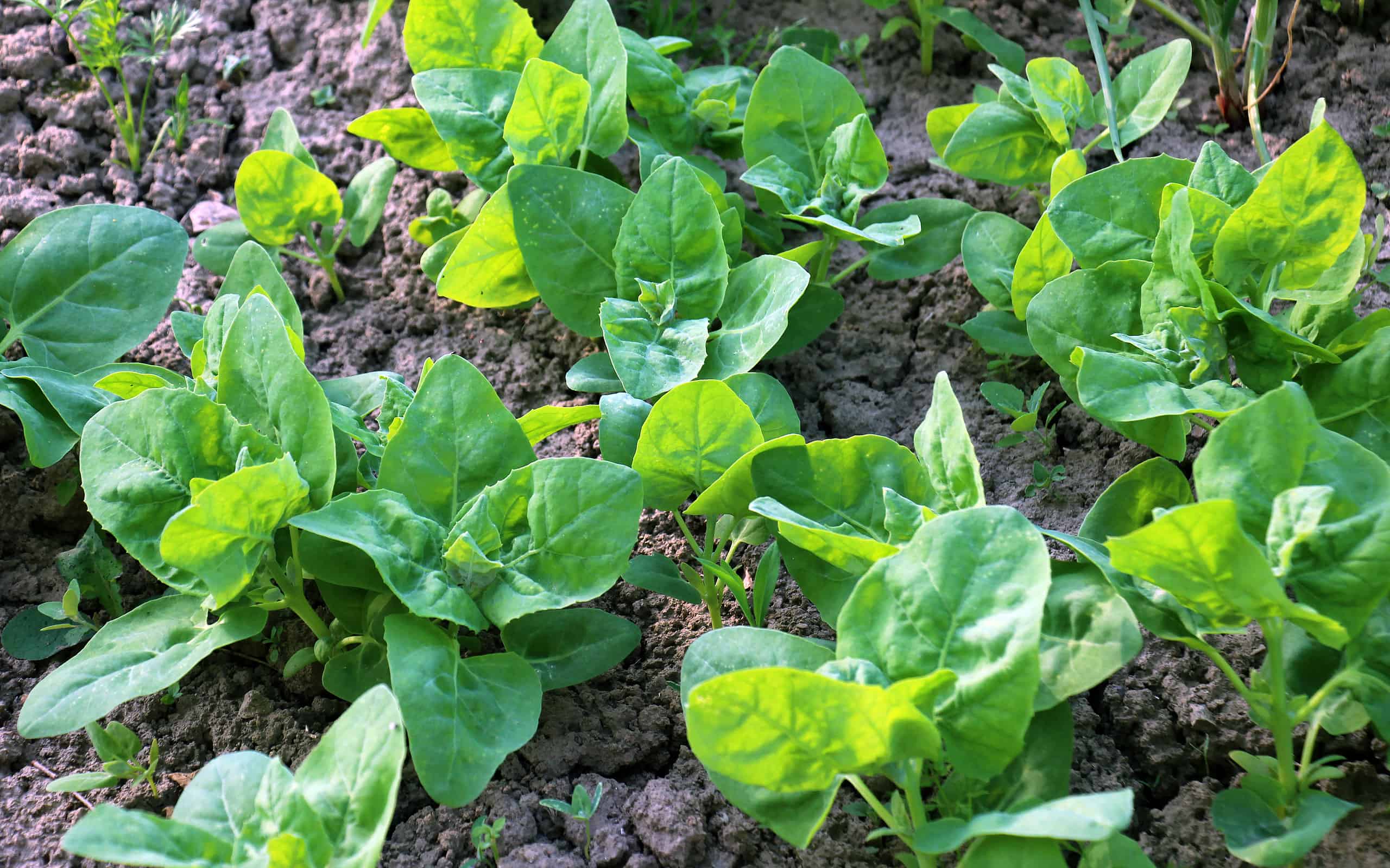
Consider the soil when selecting a planting bed style.
©Orest Lyzhechka/iStock via Getty Images
Raised beds are a good option for areas where the soil is hard to till. Hard, packed soil requires a lot of amendments and could incur problems with plants thriving as their roots will suffer from root rot due to poor drainage. Even more, garden pests such as gophers, ground squirrels, moles, rabbits, deer, or other creatures can kill plants. For example, in areas with gopher problems raised beds lined with hardware cloth prevent them from invasion.
Build the Box Frames and Create Paths
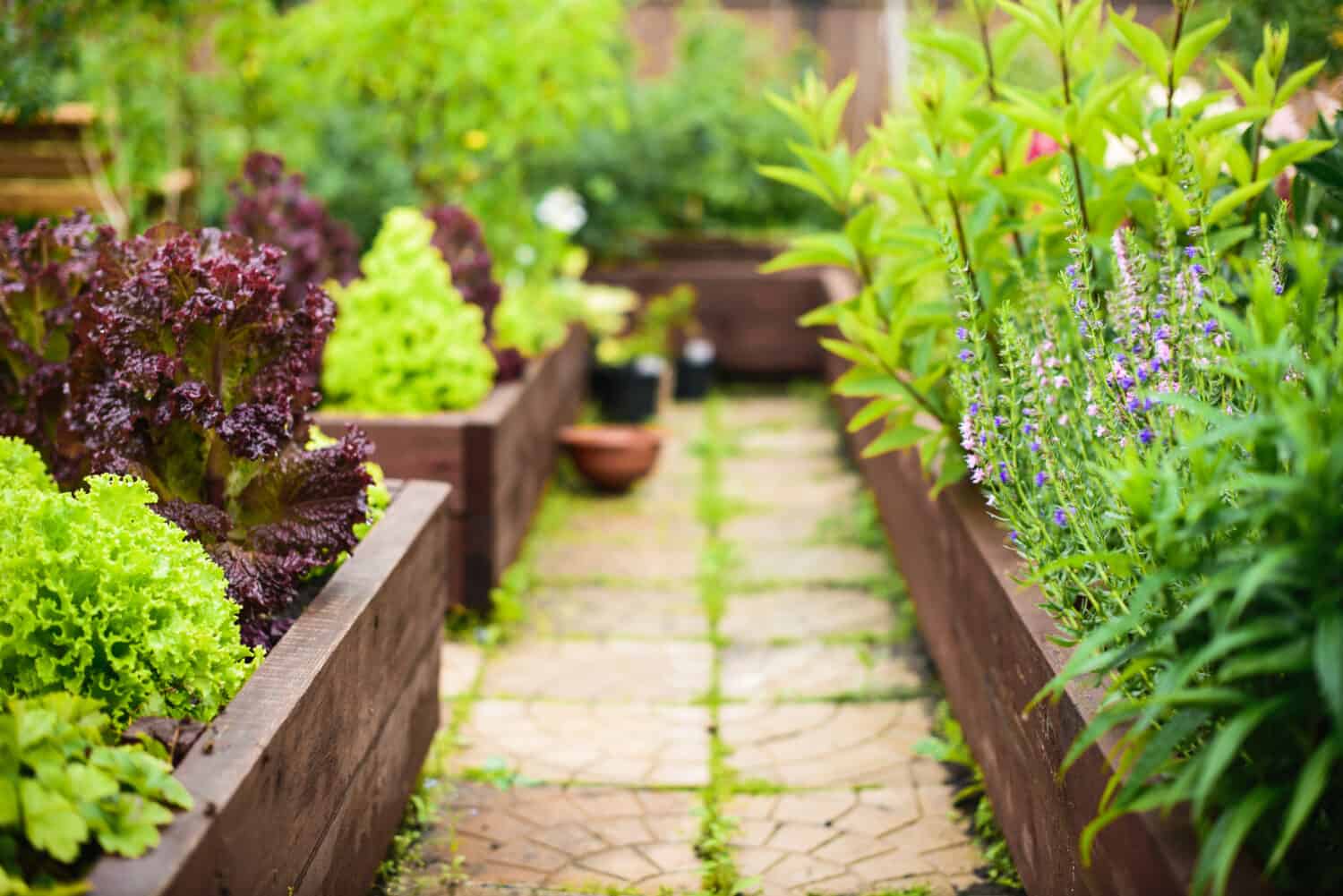
Raised beds are organized and easy to maintain.
©Nadezda Verbenko/Shutterstock.com
If raised beds are the chosen option, it is time to build frames. Paths between beds can be made using bark, mulch, pavers, or gravel. Raised beds are easy to maintain, easy to weed, and harvest from, and are good for smaller areas. As a result, they minimize bending over and there are fewer pests offering healthier plants.
Consider Vertical Gardening

Vertical gardens can be easily created in small spaces with found materials such as pallets.
©Oksana Aksenova/iStock via Getty Images
An urban garden is easy to create by building it on a wall, or fence, or by using stackable planters which are available at garden centers. Materials to use include pallets, wall pockets, bags, bottles, or trellis.
Build a Fence

Keep chickens away from the garden with a fence.
©Albina Kosenko/iStock via Getty Images
If animals are present in the garden area erect a fence. In fact, for those with chickens, keep them away from tomato plants as the plant and green fruit are toxic to them.
Test the Soil
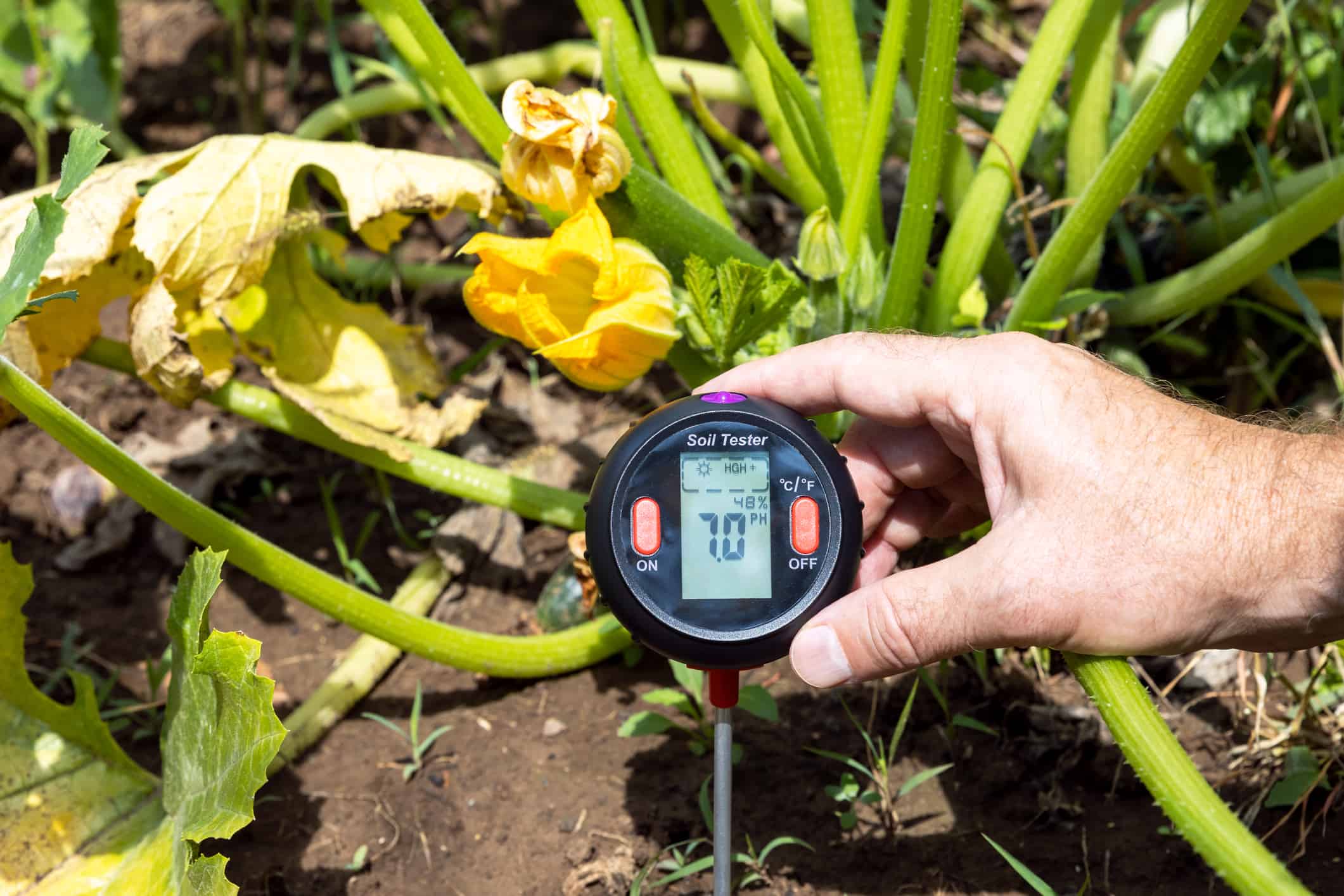
Know what your soil needs by performing a pH test.
©Mihajlo Maricic/iStock via Getty Images
Does the soil contain rocks, clay, or sand? Are there risks of pollution from nearby sources such as roadways? Is it too acidic or too alkaline? This test will give you information on the amendments needed for optimal results. Amend the soil after it has been tested to enrich and balance the pH. Plants prefer fertile, rich soil that drains well.
Select the Right Tools
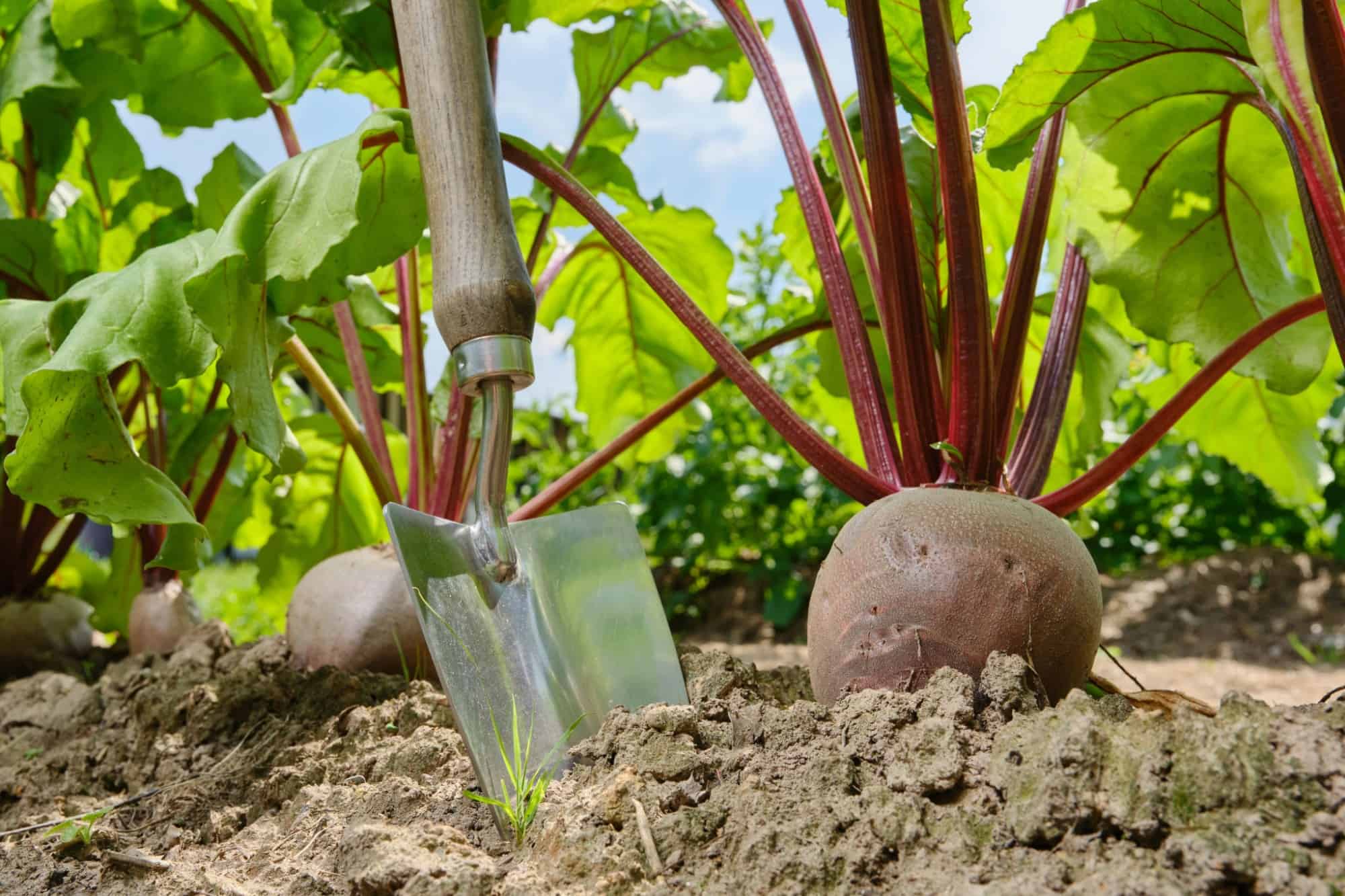
Make planting easier by using the right tools.
©Vlad Antonov/Shutterstock.com
The beginner gardener needs a watering can, watering wand, hose with an adjustable nozzle, rake, spade, hand trowel, garden rake, garden fork, loppers, pruning shears, and gloves. These basic tools will ensure that your gardening experience will be easier to do.
Plan the Crops
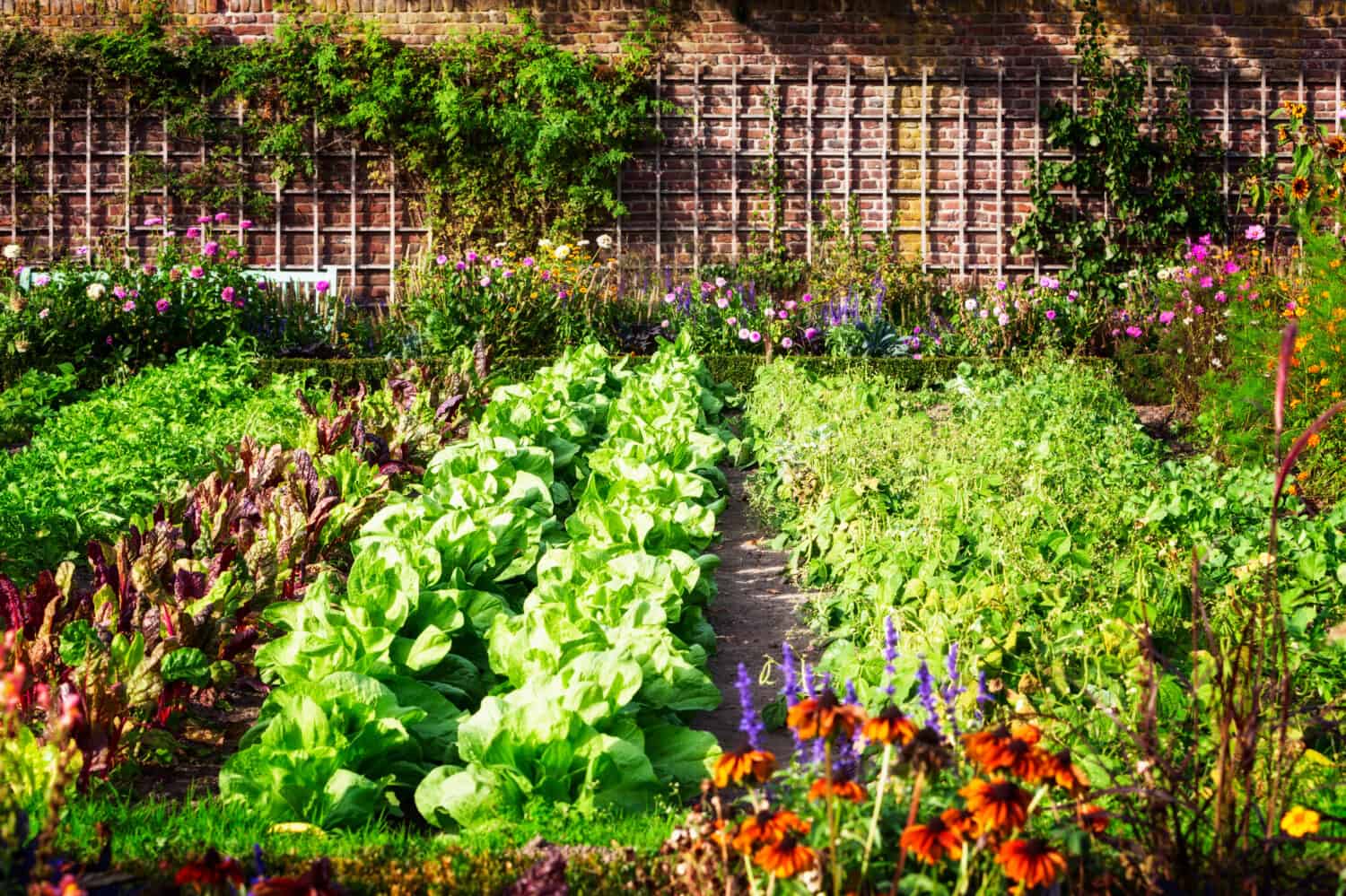
Make a plan for your garden selection and record each season’s results.
©ifiStudio/Shutterstock.com
What types of vegetables do you like to eat, and what kinds of flowers do you enjoy? Would you like to add herbs to the garden? Fruit? A garden planner can be a useful tool when growing new crops year after year where you can keep track of what worked and what needs improvement.
Consider Companion Plants

Caterpillars love to eat nasturtium which protects nearby vegetables. In addition, the chef can use them in salads.
©iStock.com/Nadya So
These plants do well when located next to each other as they benefit one or both plants. In fact, they share sunlight and watering needs. This practice reduces pests, boosts growth, and attracts pollinators. Larger plants shade smaller plants. They provide natural support, soil fertility, and suppress weeds. For example, tomato and basil are complimentary, basil repels insects such as moths which lay tomato hornworms, and thrips. Garlic repels aphids, and growing it between rows of potatoes guards the plants. Nasturtium flower keeps caterpillars away from crops like broccoli, cabbage, and kale. Corn and sunflowers serve as a natural support for peas and cucumbers. Zinnias attract pollinators.
Determine Planting Zone

Enter your zip code in the zone finder to find your planting zone area.
©https://planthardiness.ars.usda.gov/ - License
This is a critical step in gardening as some plants do better than others in certain areas of the country. The USDA Hardiness Zone Finder will inform you of weather patterns and what grows well in your area by entering your zip code to find your zone. In addition, another great resource is the Farmers’ Almanac where you can download a planting calendar to get first and last frost dates that determine harvesting times as well as plant growth and seed germination charts.
Select Which Plants Do Well in Your Zone
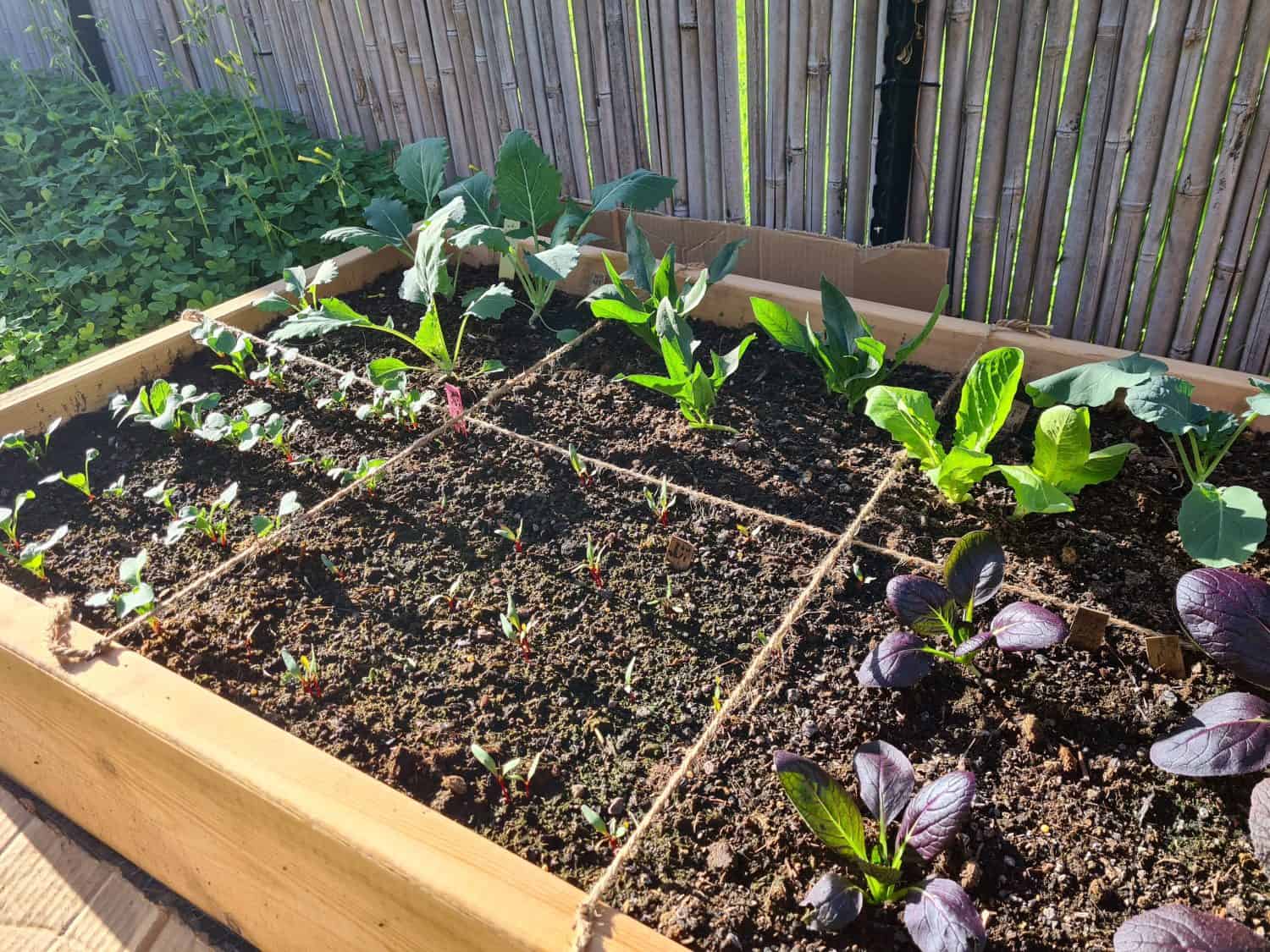
Choose the best plants for your area.
©Nura M/Shutterstock.com
Select the seeds or plants that you’ve decided to grow. Additionally, connect with other gardeners in your area or local nurseries to find out which plants do well in your neighborhood. You may live in a microclimate zone which has peculiarities to that area.
Planting from Seed
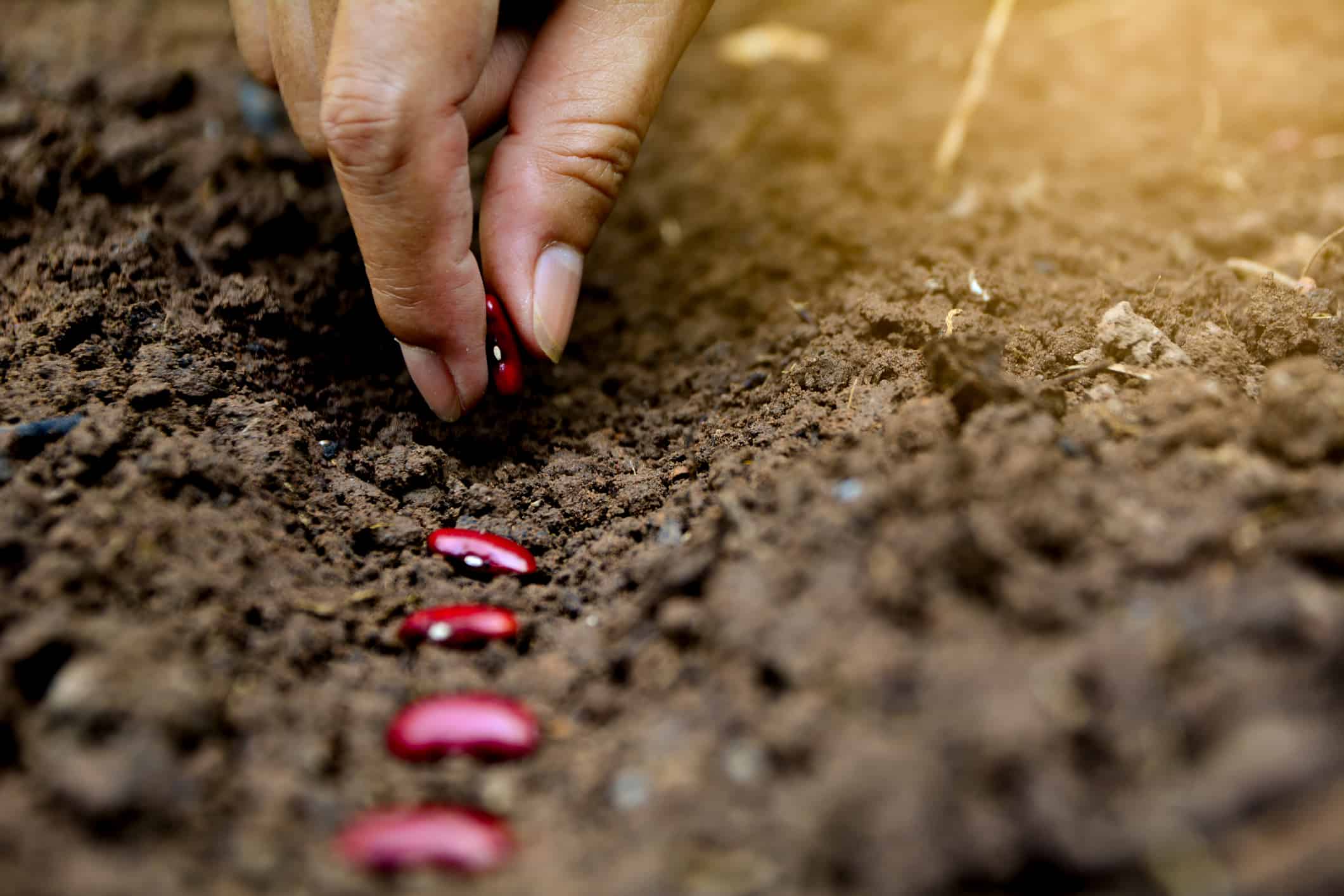
Planting from seed gives you many more plant variety options.
©kirisa99/iStock via Getty Images
Time to plant seeds. Seeds are an inexpensive way to start plants rather than buying them already started. Plus, they are fun to watch as they grow. Seed sources can be non-GMO heirloom (guaranteed natural seed that has not been genetically modified) or not depending on your preference.
Purchase Plants Already Started
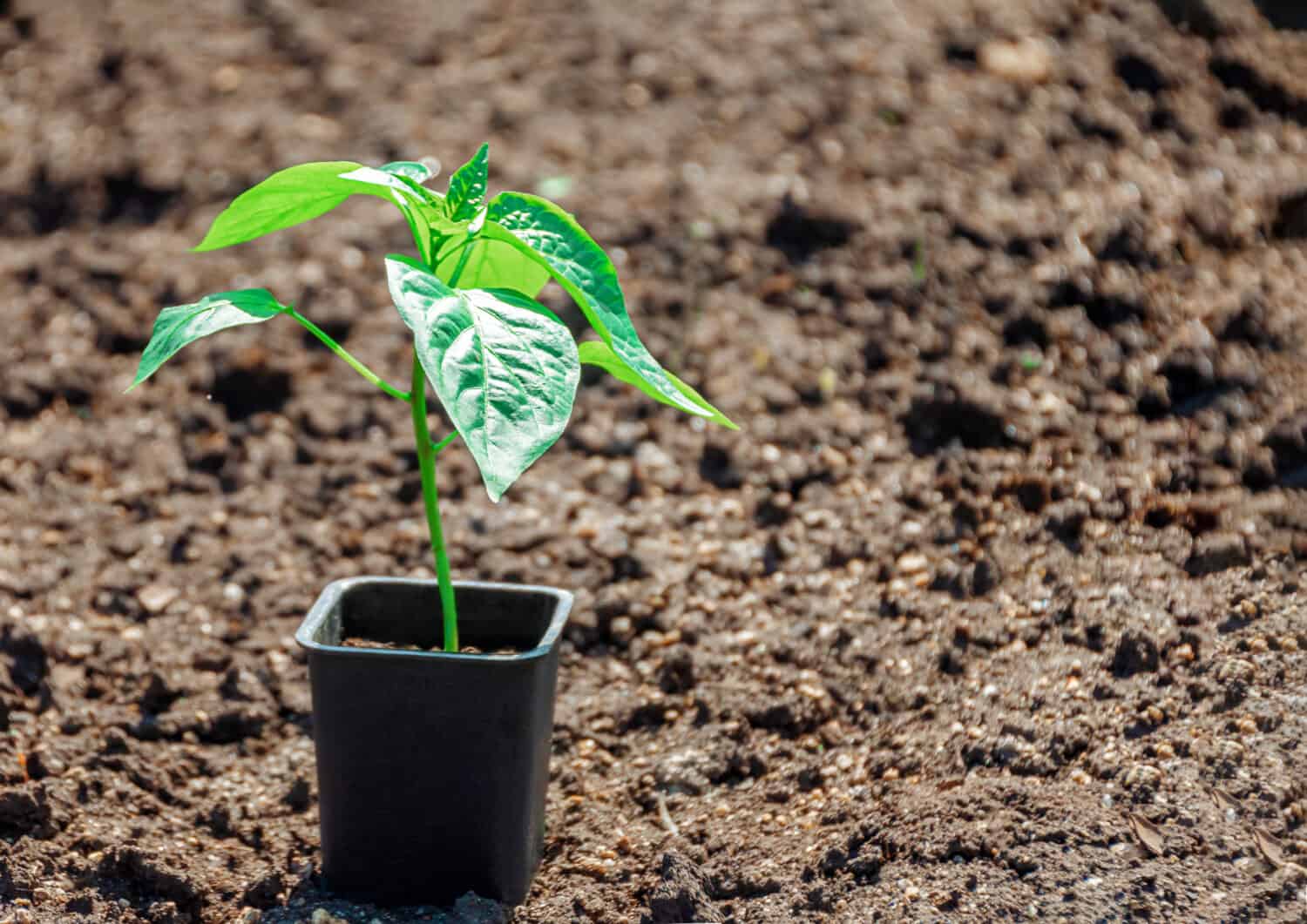
Vegetable plants already started can be purchased from local garden centers.
©Olga_Ratova/Shutterstock.com
Starter plants are available at local markets or nurseries, the selection may be limited, but it is a good way to plant if you have not started seeds.
Irrigation System
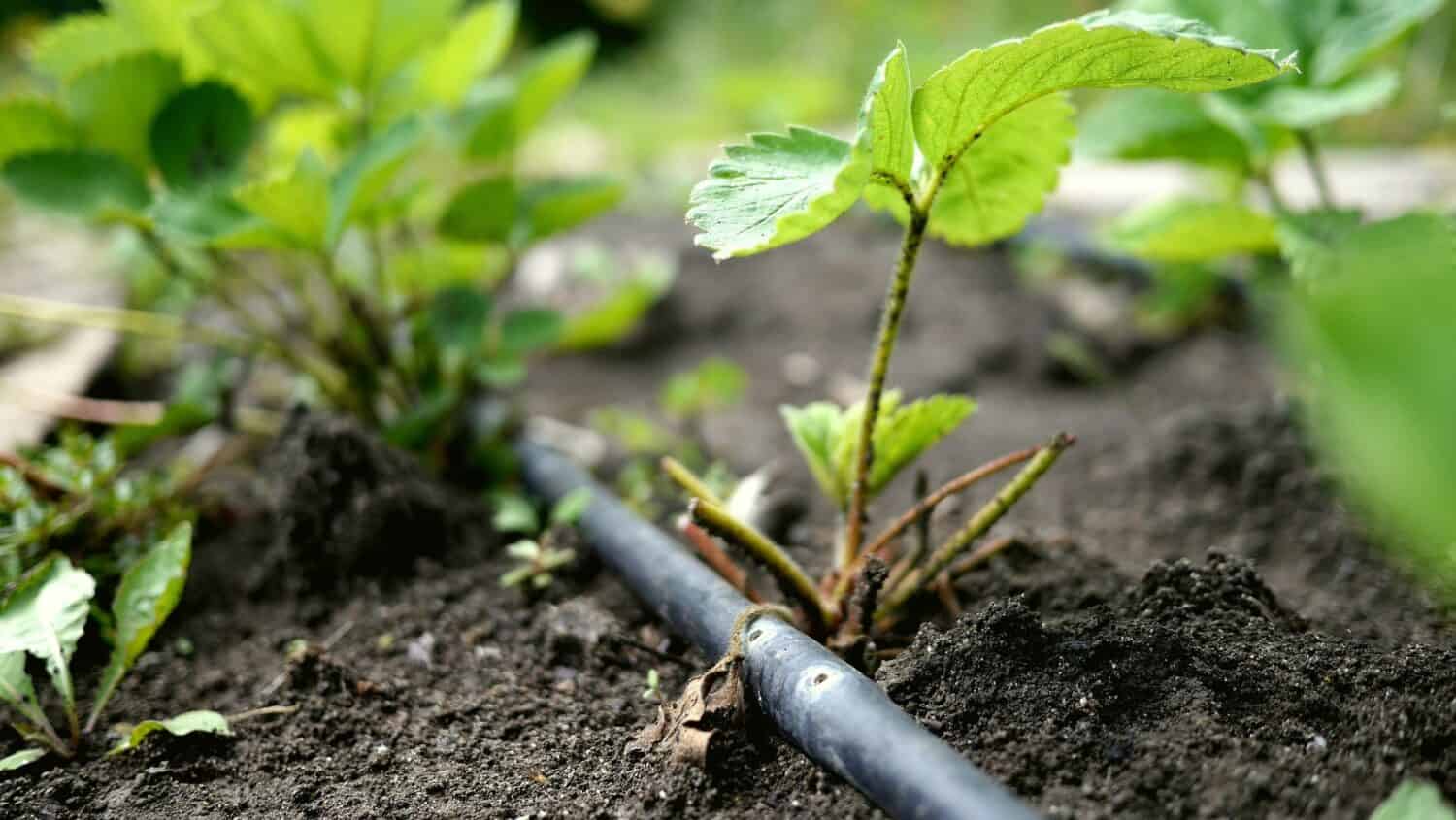
Well-designed irrigation systems are essential to bring water for healthy gardens.
©Nadeene/Shutterstock.com
This can be a do-it-yourself project or hire an irrigation expert to install one. In fact, using a soaker hose or drip irrigation is the best watering option.
Transplant Seedlings

Seedlings have a good start and are ready to be transplanted for further growth.
©n.k.junky/Shutterstock.com
When starting the garden from seed, the seedlings need to be transplanted once before going outside.
Harden Seedlings
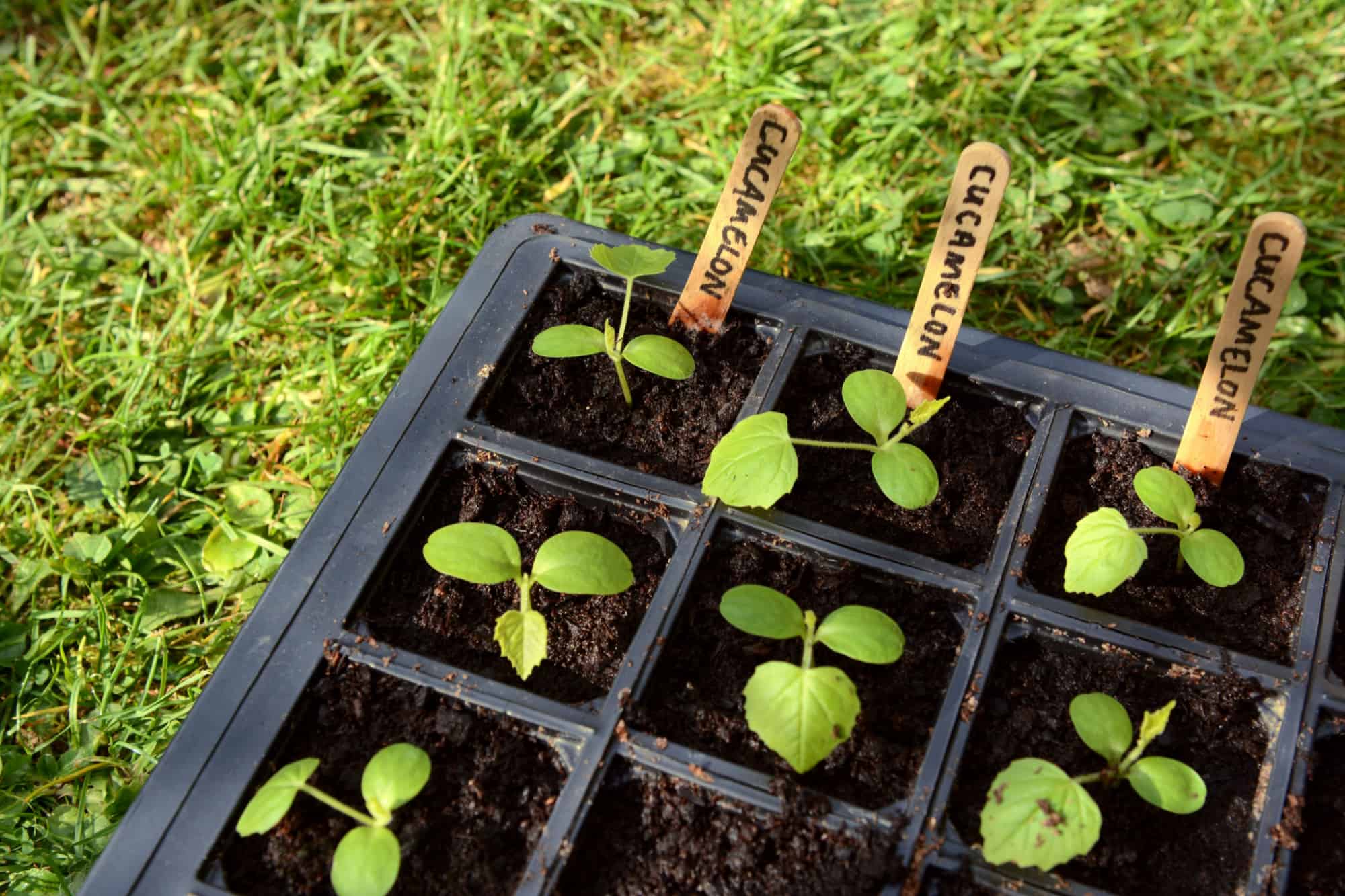
Seedlings get acclimated to outdoor temperatures before planting.
©Sarah Marchant/Shutterstock.com
When the seedlings are strong enough, the last frost has passed, and the soil has warmed they need to be hardened for the outdoors and then planted in the garden.
Time to Plant
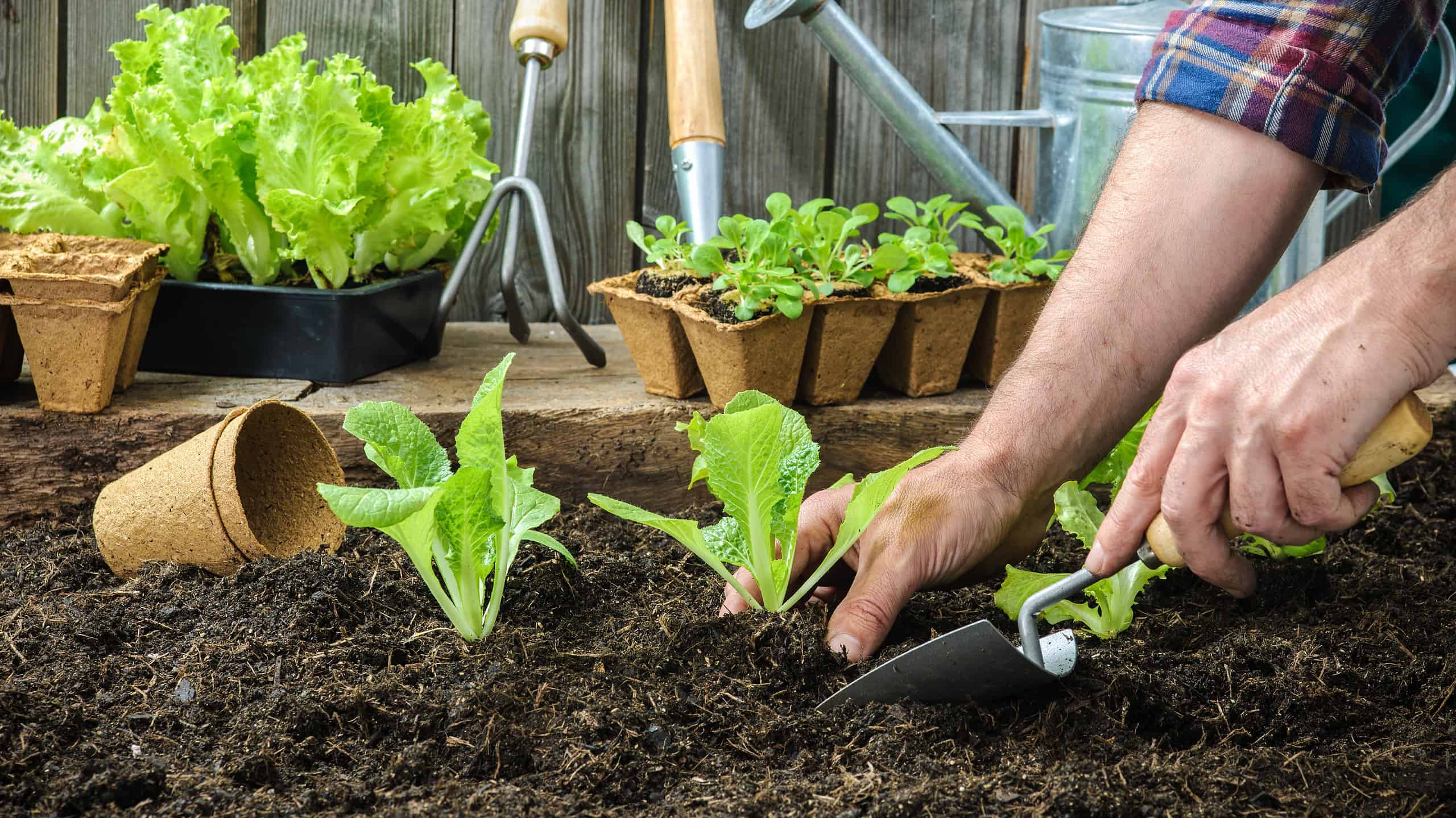
Seedlings are ready to plant in the garden.
©Alexander Raths/Shutterstock.com
When there is plenty of sunshine plant the seedlings in the garden next to the drip holes in the irrigation system.
Check the Irrigation System
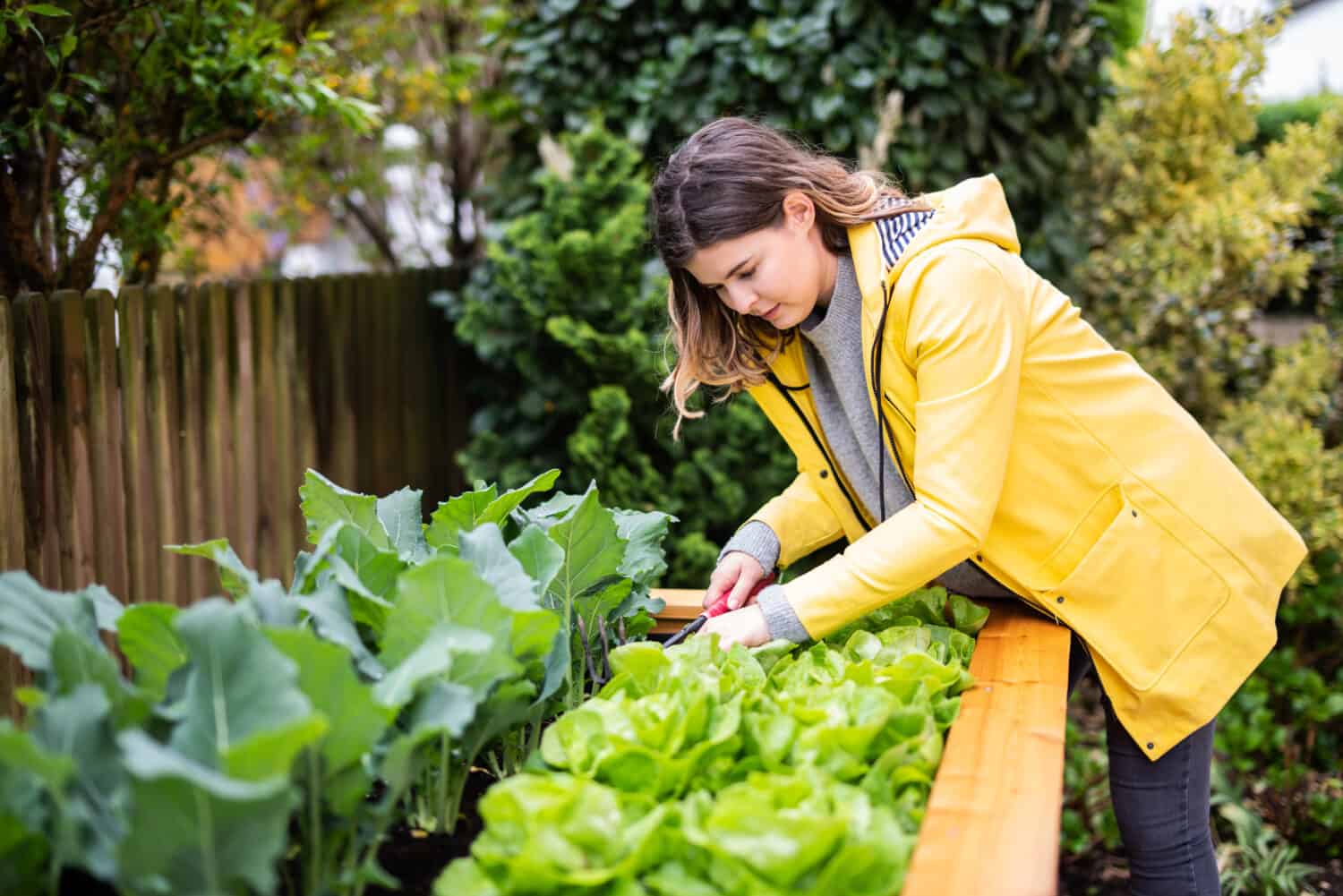
Check the soil for moisture to ensure healthy plants.
©Wellnhofer Designs/Shutterstock.com
Make sure the irrigation system is working the way you want it to by checking the soil’s moisture level after watering since this ensures the plants are getting the right amount of water. Usually, one to three times a week for 10-20 minutes is a good starting point to run irrigation, adjust as needed.
Fertilize
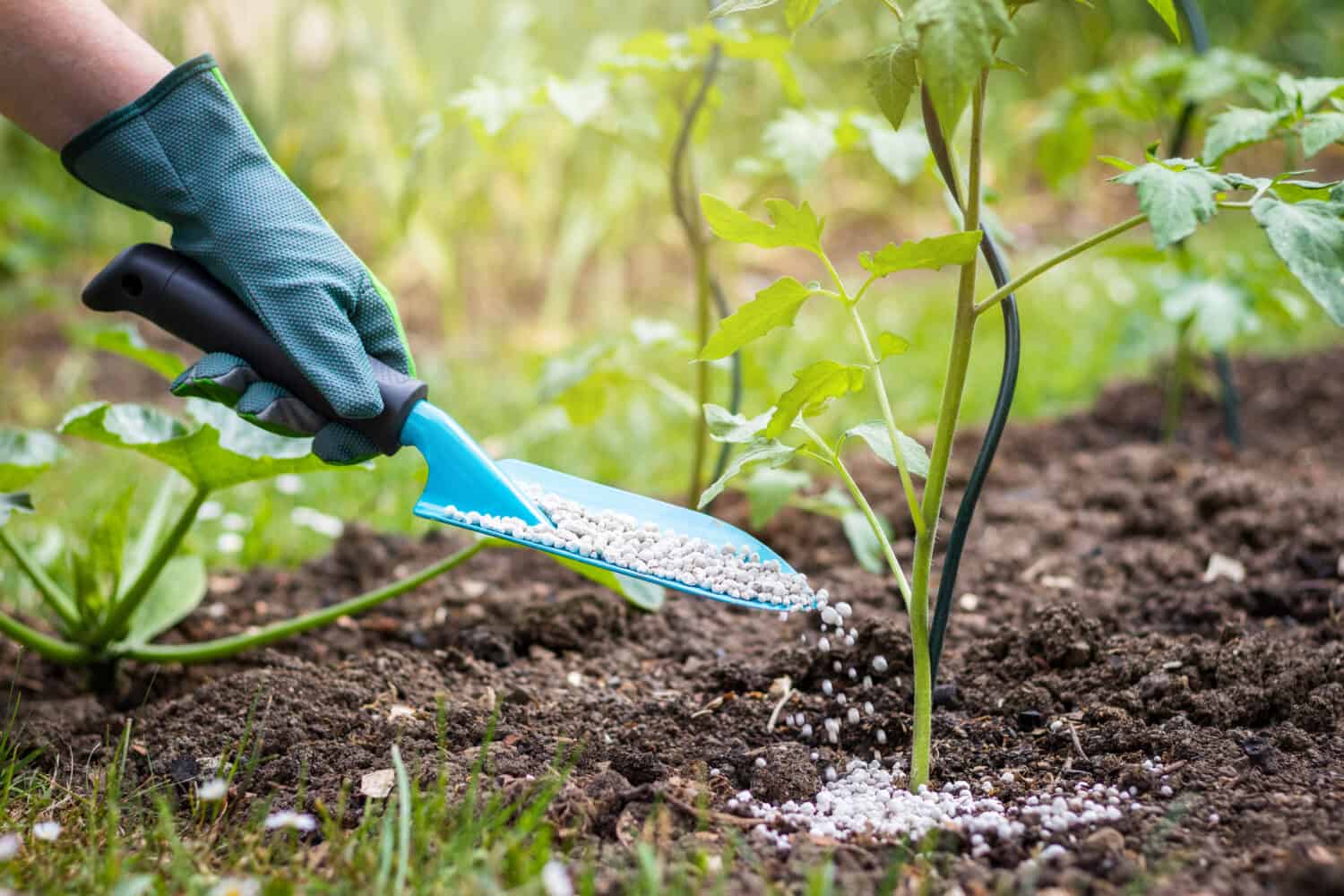
Feed the plants for maximum performance.
©encierro/Shutterstock.com
Fertilize seedlings every couple of weeks with worm tea which is great for seedlings. Additionally, check the pH and adjust for soil needs.
Weed

Weeding eliminates competition for nutrients in the garden.
©Sever180/Shutterstock.com
If there are a lot of weeds consider using mulch.
Check for Pests
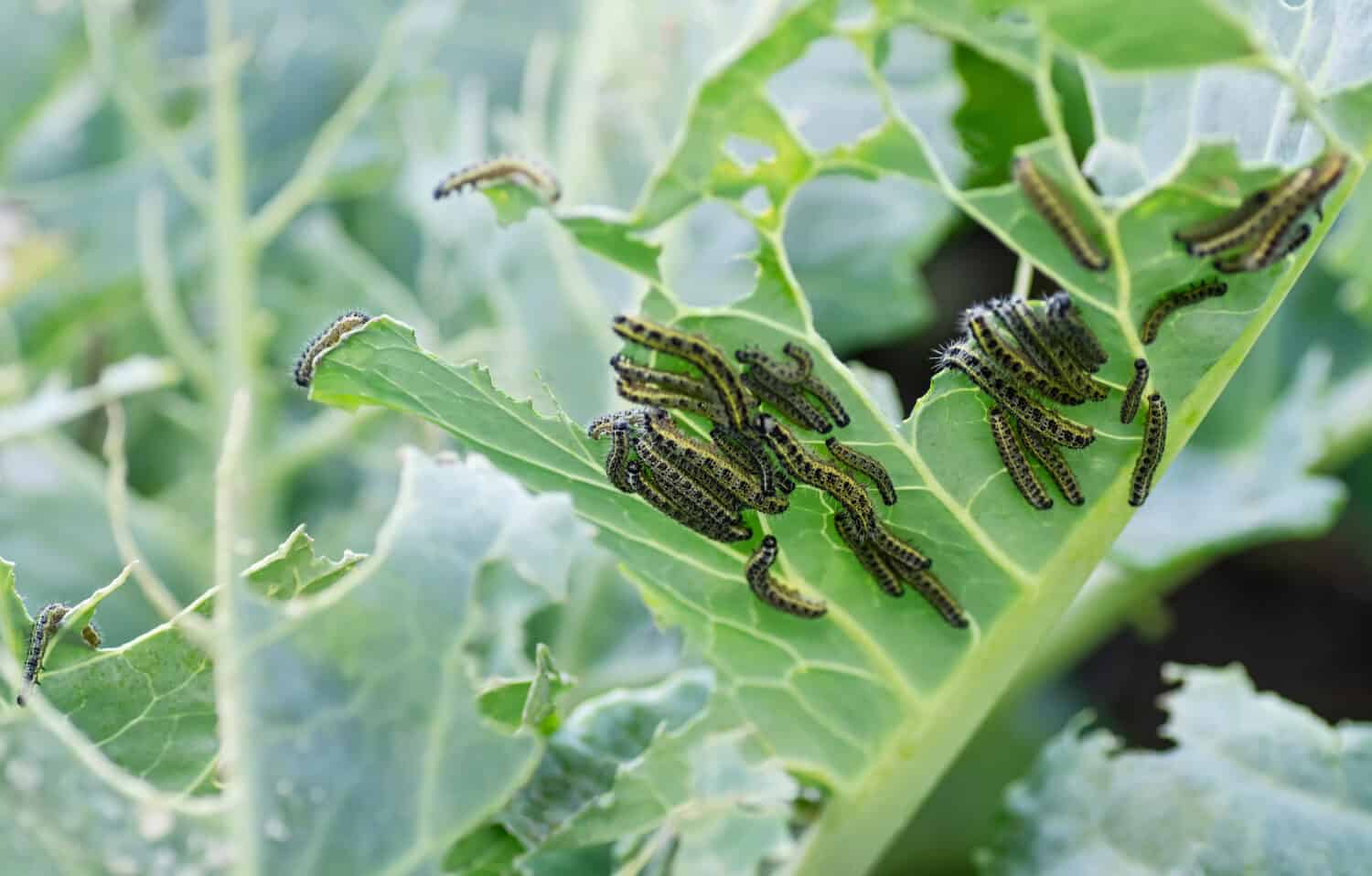
Caterpillars can do lots of damage in a short time in a garden.
©Elena_Gr/Shutterstock.com
Look for pests that may be munching on tender seedlings. Natural methods are available to eliminate pests, time to get rid of them!
Include Beneficial Insects
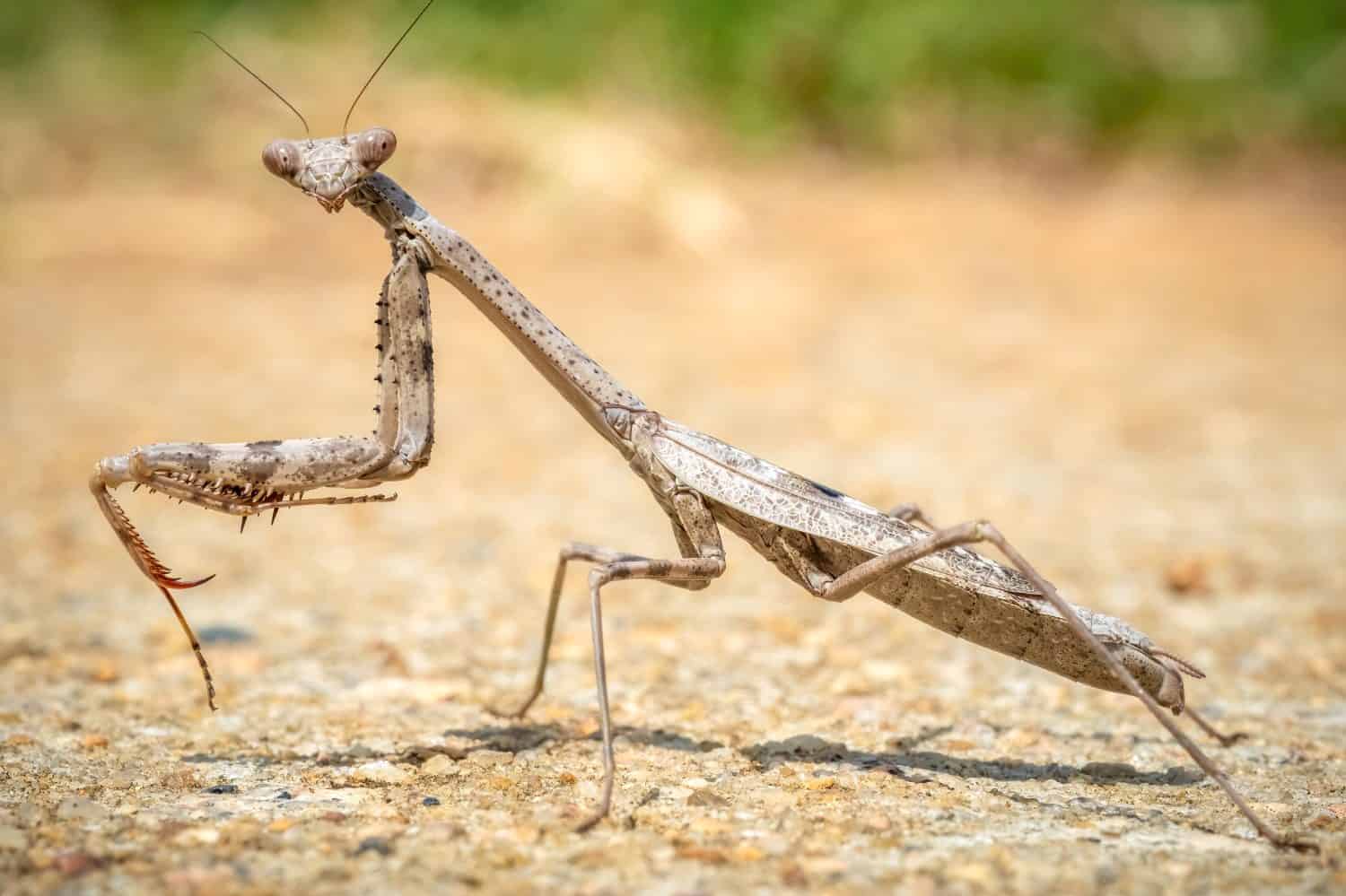
The praying mantis will rid the garden of a variety of bad insects and are interesting to watch.
©samray/Shutterstock.com
These insects provide excellent pest removal benefits as praying mantis will eat aphids, caterpillars, beetles, moths, crickets, grasshoppers, spiders, and other insects that are harmful to crops. In addition, other beneficial insects include ladybugs, spiders, and green lacewings.
Reap Your Rewards
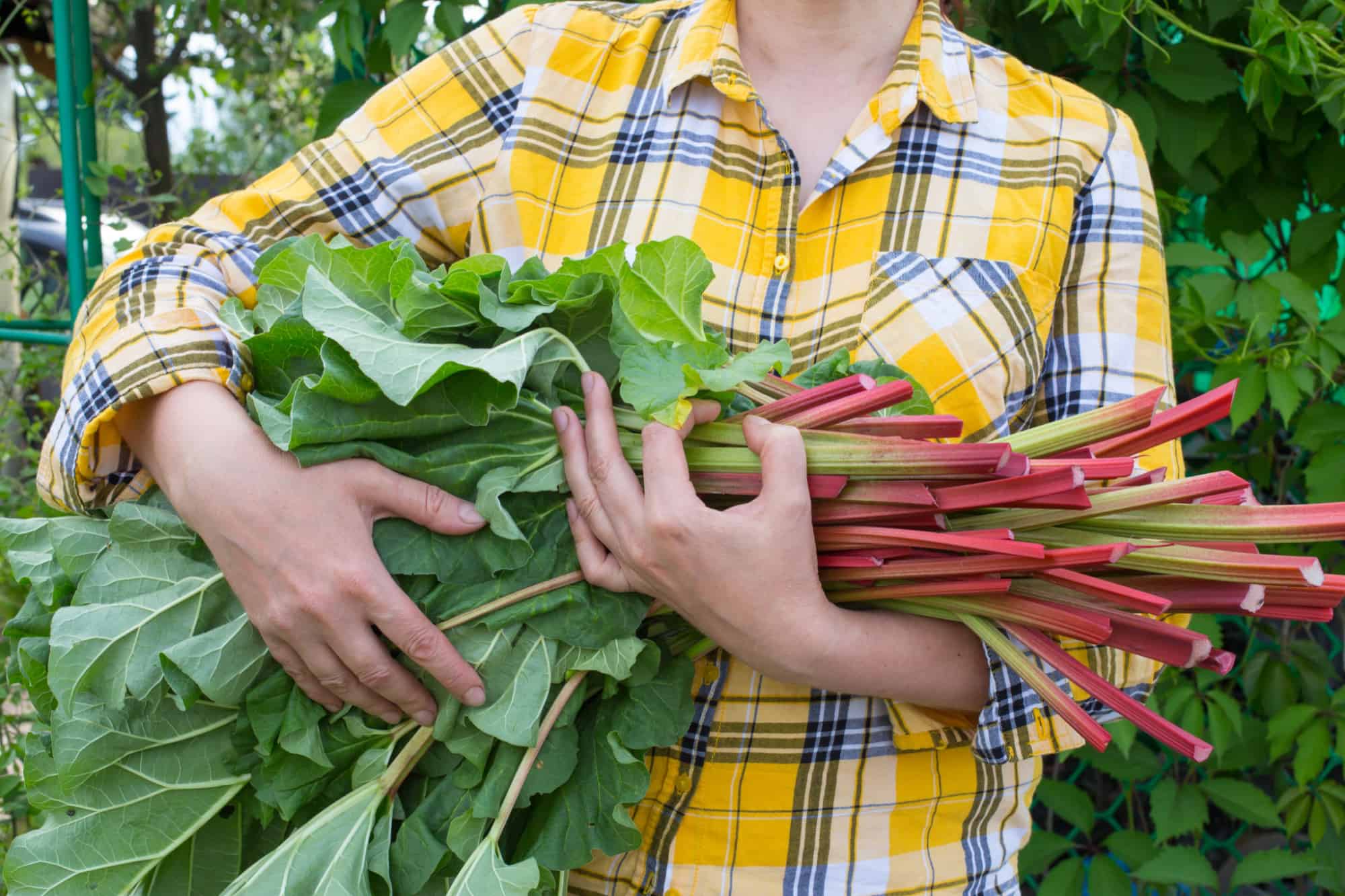
The best part of gardening is the harvest.
©Marika Kosheleva/Shutterstock.com
The final step in the best way to start a garden in 27 steps any beginner can do is by reaping the rewards of all of your time and effort. At last, it’s time to enjoy and share with others the bounty of your vegetables, herbs, and/or flowers!
In Conclusion
Gardening requires time and effort, but the rewards are many! The best way to start a garden in 27 steps any beginner can do begins with the right information. It can develop into a wonderful hobby, a place of relaxation and pride that also provides healthy food, beautiful flowers, and a habitat for garden creatures such as birds and beneficial insects. Gardening is good for the soul and body; it offers a great workout without going to the gym and vitamin D from the sun (remember to wear sunscreen.) In the end, gardeners can feel good about all the hard work they put into planning, working, and harvesting their crops.
Summary of The Best Way to Start a Garden in 27 Steps Any Beginner Can Do
| 27 Steps to Start a Garden | Example |
|---|---|
| Choose a location | Needs 6 hours of sunshine |
| Define what to grow | Select plants to grow |
| Locate the water source | Plan the garden near a water source |
| Plan the garden size | Create a manageable garden |
| Select gardening method | Choose method to use |
| Raised or in-ground beds | Evaluate the type of soil |
| Build the box frames and create paths | Create raised bed boxes |
| Consider vertical gardening | Great for limited or urban spaces |
| Build a fence | Keep animals out and safe |
| Test the soil | Amend if needed |
| Select the right tools | Make work easier |
| Plan the crops | Create a plan and record garden results |
| Consider companion plants | Keep plants healthy |
| Determine planting zone | Check your zone |
| Select which plants do well in your zone | The right plants for the right area |
| Planting from seed | Lots of options |
| Purchase plants already started | Starter plants are available |
| Irrigation system | Soaker or drip makes watering easy |
| Harden seedlings | Get seeds used to the outdoors |
| Transplant seedlings | Transplant seedlings to strengthen |
| Time to plant | Plants are ready for the garden |
| Check the irrigation system | Make sure the timing is correct |
| Fertilize | Feed plants for optimum yield |
| Weed | Weed to eliminate competition for nutrients |
| Check for pests | Get a jump on eliminating pests |
| Include beneficial insects | Beneficial insects do the work for you |
| Reap your rewards | Harvest time |
The photo featured at the top of this post is © filippo giuliani/Shutterstock.com
Thank you for reading! Have some feedback for us? Contact the AZ Animals editorial team.







